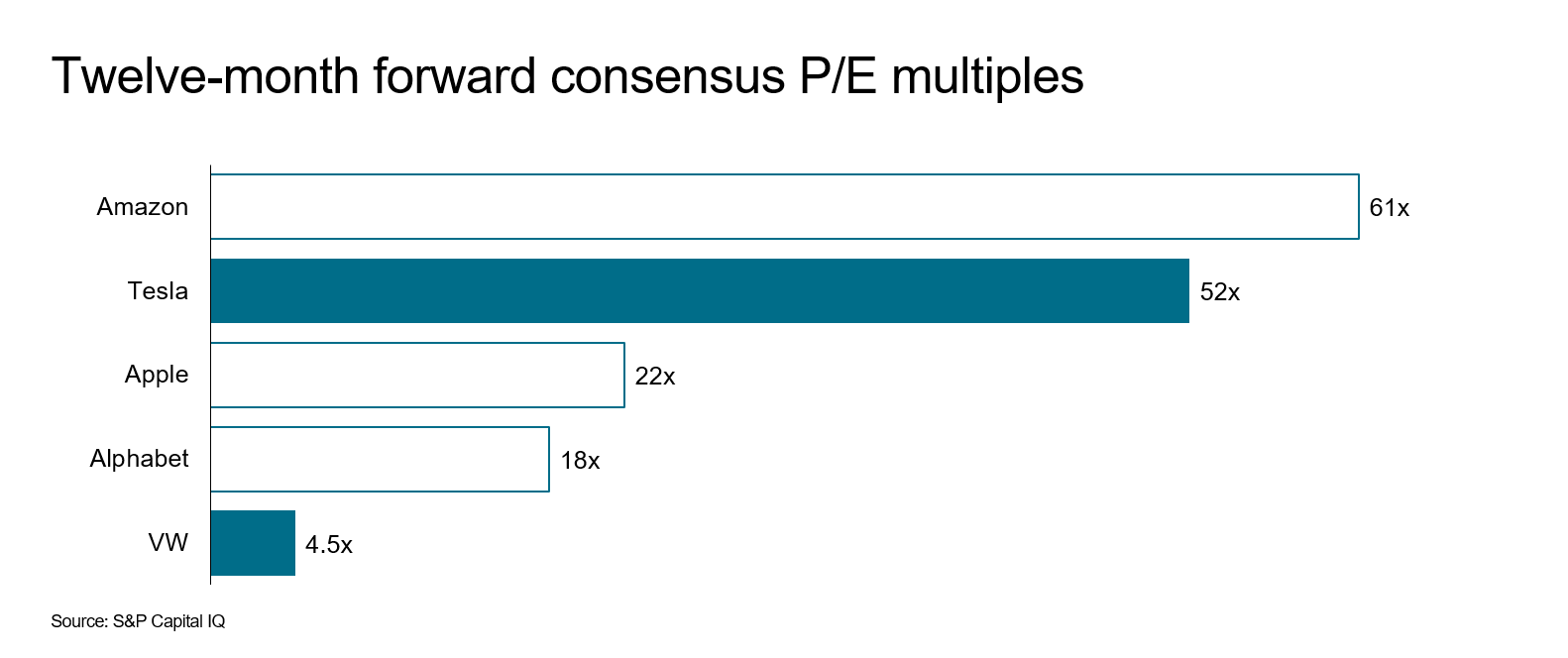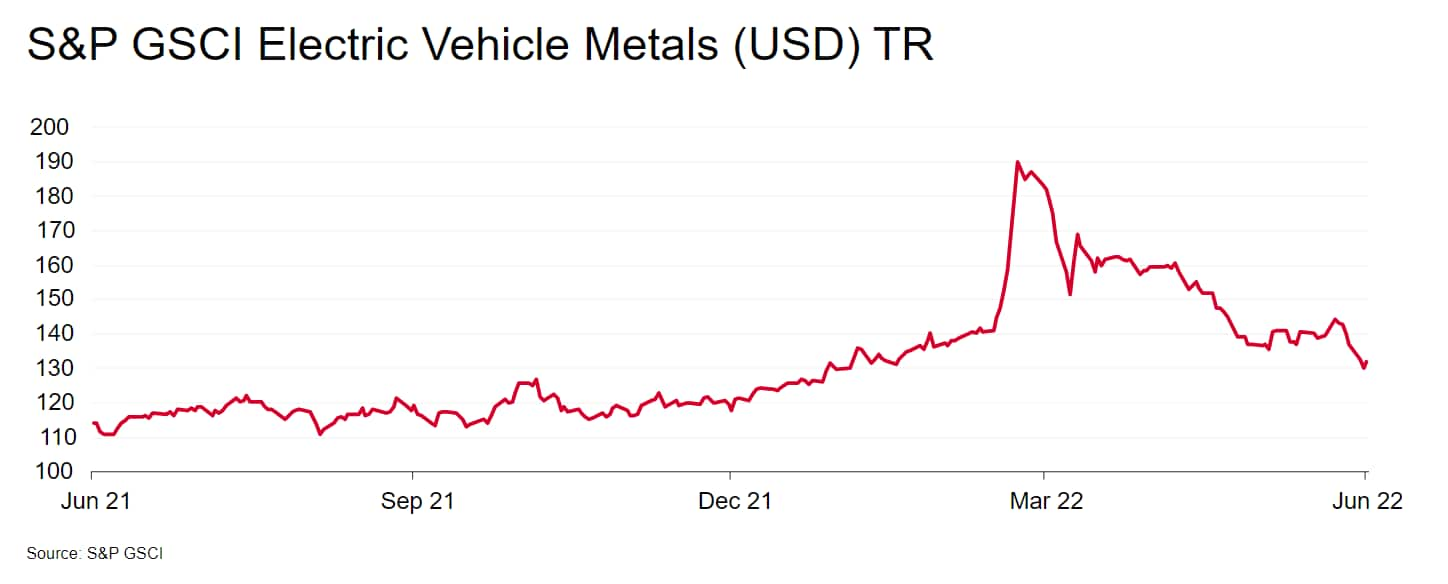[ad_1]
Automotive Month to month Newsletter &
Podcast:
What do capital marketplaces explain to us about the automotive
market?
Though economical marketplaces get headlines when fear
and volatility are optimum, the exact marketplaces do also functionality
rationally, and are a window into an ongoing re-evaluation of
companies’ potential customers and challenges. So, what can we find out from the
point out of the marketplaces these days?
The autos sector incorporates some of the cheapest and the most
highly-priced providers in the world. This at the same time displays both of those
the inherent troubles of legacy carmaking, and the markets’ hopes
for the future beneficiaries of modify. In the latest months automotive
start ups have confronted a stark valuation actuality check, and the
virtual closure of the SPAC funding route reflects considerably better
scrutiny from buyers. Further more funds displacements are very likely
in the coming a long time as a lumpy technological changeover performs out
all together the supply chain. None of this has basically altered
the broad lengthy-term outlook for electrification. In the meantime in the vicinity of
term, there is plenty of turbulence – notably from currency,
mainly to the detriment of US automakers.
Autos is the most polarised sector
The automaking sector is in the unusual placement of containing
equally some of the most affordable – and some of the most costly detailed
corporations in the earth. On one particular facet legacy recognized automakers –
like VW trades at about 4.5 instances its anticipated 2022 earnings. At
the other conclusion tech-concentrated electric powered vehicle makers notably Tesla
for which this determine is 52 instances, (vs. for comparison Alphabet
18x, Apple 22x, and Amazon 61x) – additionally many as nonetheless-unprofitable
start out-ups for which no these types of calculation is yet feasible.

Legacy autos’ valuations reflect inherent
problems
Automakers like VW have traded inexpensively relative to their
earnings for lots of decades. There are several good reasons why: Sector
profitability is reduced compared to its capital necessities. Equilibrium
sheet threat is higher because of to stock needs and the require to
spend (and also properly underwrite) the challenges of part
suppliers and supplier networks. This in change means personal bankruptcy chance
in financial downturns is important. The new cohort of get started-ups
promises to address many of these: Reduced mechanical complexity
indicates lesser money demands, and less complicated supply chains. Fewer
upkeep implies few or no standard dealers and decreased
inventories. For this team, remaining electric powered-only is the
enabler.
Relative advancement anticipations underpin the valuation
gap
Nevertheless, the clearest justification for the valuation gap is the
growth differential. This yr-to-date, international battery electric
automobile income grew 68% vs. prior 12 months, although overall mild automobiles
contracted by 13%. Legacy automakers access to that development is
limited due to the fact even BEV changeover leaders like BMW and VW have
all-around 6% BEV in their revenue blend. Finally, legacy automakers are
battling to protect a $2.5tn current market, when new automakers aspire to
capture it – with tiny to drop.
Trader appetite for ‘New autos’ has waned
substantially
New automakers’ valuations have been through stark adjustments in
the previous calendar year. The chart down below lists a range of electric
carmakers and their existing industry values relative to their
respective peak amounts. These moves are partly macro-driven:
Economic problems have come to be additional challenging globally, with
expansion slowing, inflation up, and urge for food for dangerous belongings in
general considerably down. Nonetheless, the crucial shift is most likely
growing recognition of the problems inherent in starting up and
scaling automotive creation from scratch.
Desired funding route now closed
At the very same time, the acceptance of fundraising by means of the SPAC
(particular intent acquisition firm) route has ground to a virtual
halt, with 69 such transactions in 2022 to date as opposed to 613 throughout
2021. EV companies that went public by way of the speculative ‘blank
cheque’ system in 2021 provided Fisker, Polestar, Lucid, and
Arrival. Businesses now wishing to follow in their footsteps are
very likely to noticeably higher money scrutiny.


A bumpy transition
Early market place euphoria has not provided way to the truth of the
process in front of us. Certainly the advancement of BEVs and the
commensurate drop in ICEs (Inside Combustion Engine) will be
the industry’s most important changeover given that its inception early
very last century – this will definitely not be easy. A transformation
which significantly impacts all sides of the mobility ecosystem –
innovation, motor vehicle development, technique sourcing, output
dynamics, retail engagement and the aftermarket – will be “bumpy”.
This will be uncharted territory at virtually each and every level.
Changeover speed, commitment by stakeholders (people,
government, sellers and so forth.), securing upstream battery raw resources,
altered logistic streams, client acceptance/education and learning and an
all-new support dynamic all cloud the sky. The latest ICE-targeted
ecosystem took us around a century to hone – expecting a
transformation with little drama via the next 10 years is not
realistic.
Capital displacement is likely across the
ecosystem
The prospect for money displacement is substantial at all stages of
the ecosystem. Scenario in issue are the part suppliers. Essential
to foreseeable future innovation, re-investment decision and most of the present motor vehicle
benefit incorporate, various suppliers in program places which disappear in the
BEV world are confronted with important decisions. The options are to stand
pat and trip the quantity decrease, pivot, and concentration attempts on
units key to the BEV area, double-down and be a consolidator in
a declining industry, or simply provide the procedure. Timeframes will
change though the displacement is simple. There will most
certainly be winners and losers during the changeover.
Electrification has not been derailed
In spite of the ensuing ecosystems shifts, does this necessarily mean
electrification now will not happen, or will materialize slower? There is
restricted proof of significant modifications to the basic outlook. For
a single, the write-up-Ukraine surge in battery raw content selling prices has
abated relatively, whilst nevertheless-elevated gasoline costs present
support to BEV possession expenses on a relative basis. Additionally,
regulatory momentum carries on to get the job done in favour of electrification,
with the EU parliament notably voting in early June to ban new
interior combustion sales from 2035, albeit still topic to
settlement from prominent opponents these types of as Germany.

The shifting sands of currency
Last but not least, a notice on forex actions. Global automakers’
fortunes are to some extent a perform of central banks’
perhaps divergent methods to tackling inflation in the
coming several years. Exclusively, a strong US greenback is producing
problems for US domestic carmakers, and a raise to all those
elsewhere. The dollar’s 19 12 months substantial vs. other currencies (USDX
index) hurts GM and Ford because their money from abroad
operations is introduced dwelling at a fewer favourable exchange charge.
Conversely, a solid dollar is great information for automakers exterior the
United States, whose abroad earnings are boosted by currency
outcomes. No matter whether investing exterior the United States will make perception
is dependent on one’s point of view: A US investor in Nissan would have
observed its shares slide only 10% but would have lost another 15% from
the weakening yen.


————————————————————————————————-
Dive Deeper:
Auto desire insights at your fingertips. Study
extra.
S&P Global Mobility updates
light-weight car or truck generation forecast for June. Read the
report.
Question the
Professional: Demian Flowers, Automotive Money Analyst
Inquire the Qualified: Michael Robinet,
Government Director, Automotive Consulting Expert services


This posting was posted by S&P World-wide Mobility and not by S&P International Ratings, which is a separately managed division of S&P Worldwide.
[ad_2]
Source link
